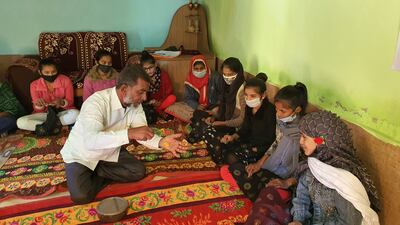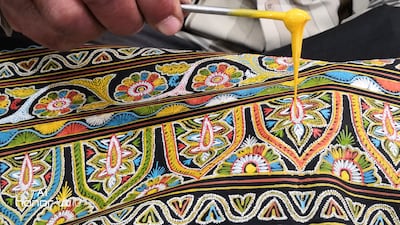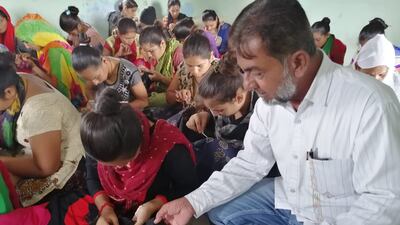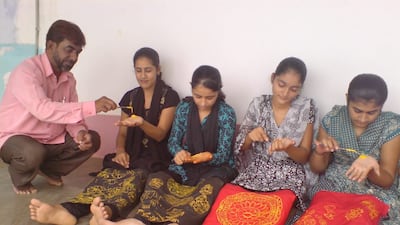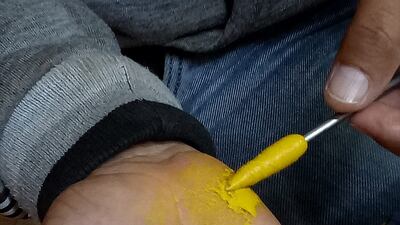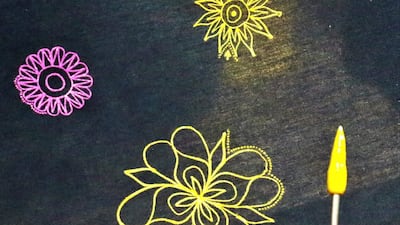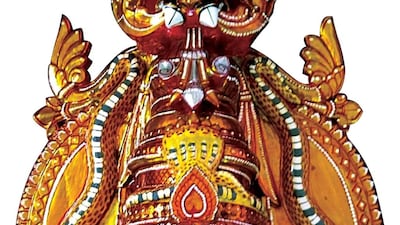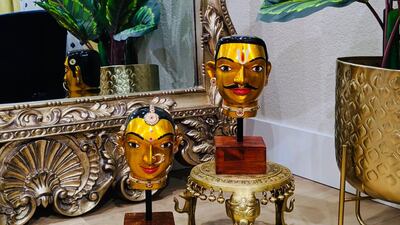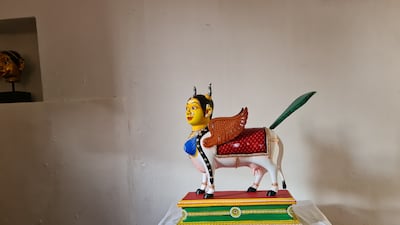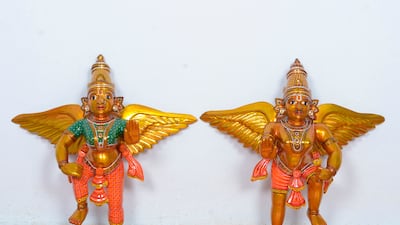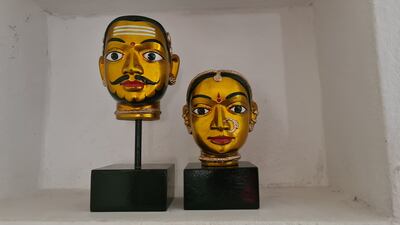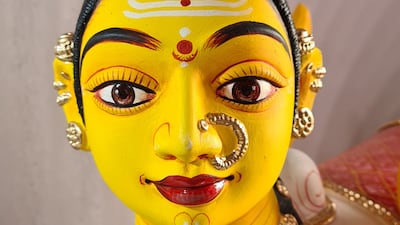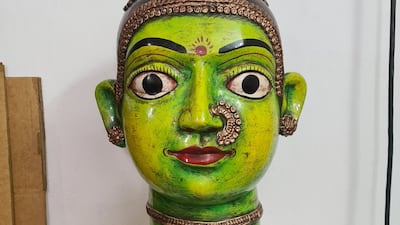A thin thread of paint hangs from a needle as it is slowly guided with deft turns of the hand into a pattern on a piece of cloth.
The process is repeated a few more times until a floral design is ready within minutes.
Sumer Khatri shows off the beautiful pattern while explaining the intricacies of Rogan painting and the struggles his family face to keep the art alive.
Rogan painting is a traditional art of cloth painting practised only in Kutch district of Gujarat, India.
The art, which originated in Iran, is believed to be more than 400 years old and gets its name from the Persian word for "oil", from the main ingredient of castor oil in the paint.
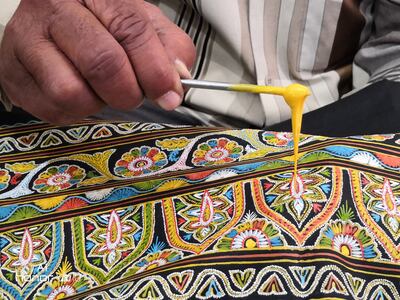
After India’s independence in 1947, only four families in three villages of Gujarat practised this art.
By 1975, the three other families had given it up, as it hardly made a decent living, and took to other means of livelihood.
Since then, the Khatri family in Nirona village is the only family who have kept it alive, in spite of the difficulties.
Sumer Khatri's father, Abdul Gafur, fondly referred to as Gafur Bhai, the head of the Khatri family, is credited with having revived the art for which he was awarded Padma Shri — India's fourth highest civilian award — in November 2021.
“Rogan art is a very difficult and time-consuming form of artwork with low returns," he tells The National.
Earlier, the practice was used as a barter. For marriages, Mr Khatri's family would make the ceremonial dresses, bedcovers, table covers and more using Rogan art. Weddings and festivities were their main source of income.
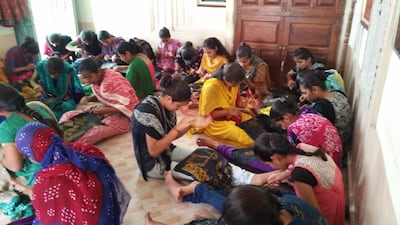
Even when the whole family was involved in producing the art, it still did not fetch enough to feed all.
“I left school after fourth grade and focused on the art to earn more money. So did my siblings,” says Gafur Bhai.
Women had to do daily chores and contribute to the family budget, so they were encouraged to do simpler artwork such as bandhej and bandhani (tie and die) which would fetch about 2 rupees, which was quite a deal in those days for the time spent.
Over the years, the practice became so rigid that women would naturally devote their time to other artforms.
Two of his Mr Khatri's nieces also learnt this art, but were unable to pursue their passion after they were married. This discouraged the Khatri family from teaching the artform to other female members.
But word soon got around that the family taught the art to only male members of the family.
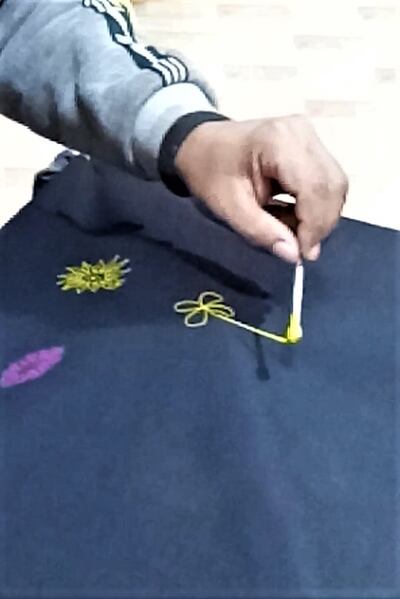
“Often we would hear of this allegation that our family was secretive and we don’t show or teach the art process," Sumer Khatri says.
"Things got to such a state that in 2010 an international NGO from Paris, composed of four officials, landed at our home.
"They asked us the reason for the secretiveness and discrimination in teaching Rogan painting."
Gafur Bhai took this as an opportunity to refute all of the claims.
As he demonstrated and explained the intricacies of the art to the team, the officials realised there had been some miscommunication, or a deliberate attempt to bring the family into disrepute.
After the NGO visit, Gafur Bhai decided he would provide Rogan art classes for women only.
“We take in girls to coach them on this art from all communities” he says.
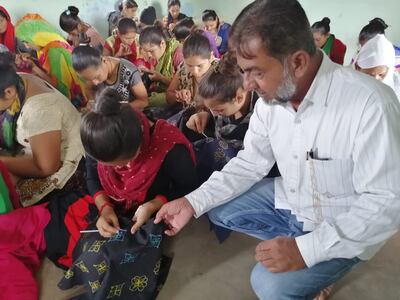
Rogan art does not use previously drawn outlines. It is purely from imagination. Hours of dedication and patience are required to produce just one A4-sized fabric.
In the classes, an artist from the Khatri family teaches girls how to dab the needle into the ink, which is a kind of semi-fluid paste, rolling it and dragging the fine thread of ink to make geometric or floral patterns.
Just this basic initiation into the art takes two to three hours.
Since the classes opened in 2010, more than 400 girls have been trained by the Khatri family. The first batch had only 15 girls.
Seeing the complexity of the art, initially the girls were hesitant to enrol. The Khatris had to convince them that one member of the family would be there to guide them.
There is no minimum qualification required for this training but the maximum age is 15 years.
When asked how he perceives the future of the art, Gafur Bhai says he's keen to have more students so that the Rogan is kept alive.
"I sincerely hope Rogan painting would get a heritage tag, which would help to preserve and pursue the art well and also prevent anyone else from faking it," he says.
